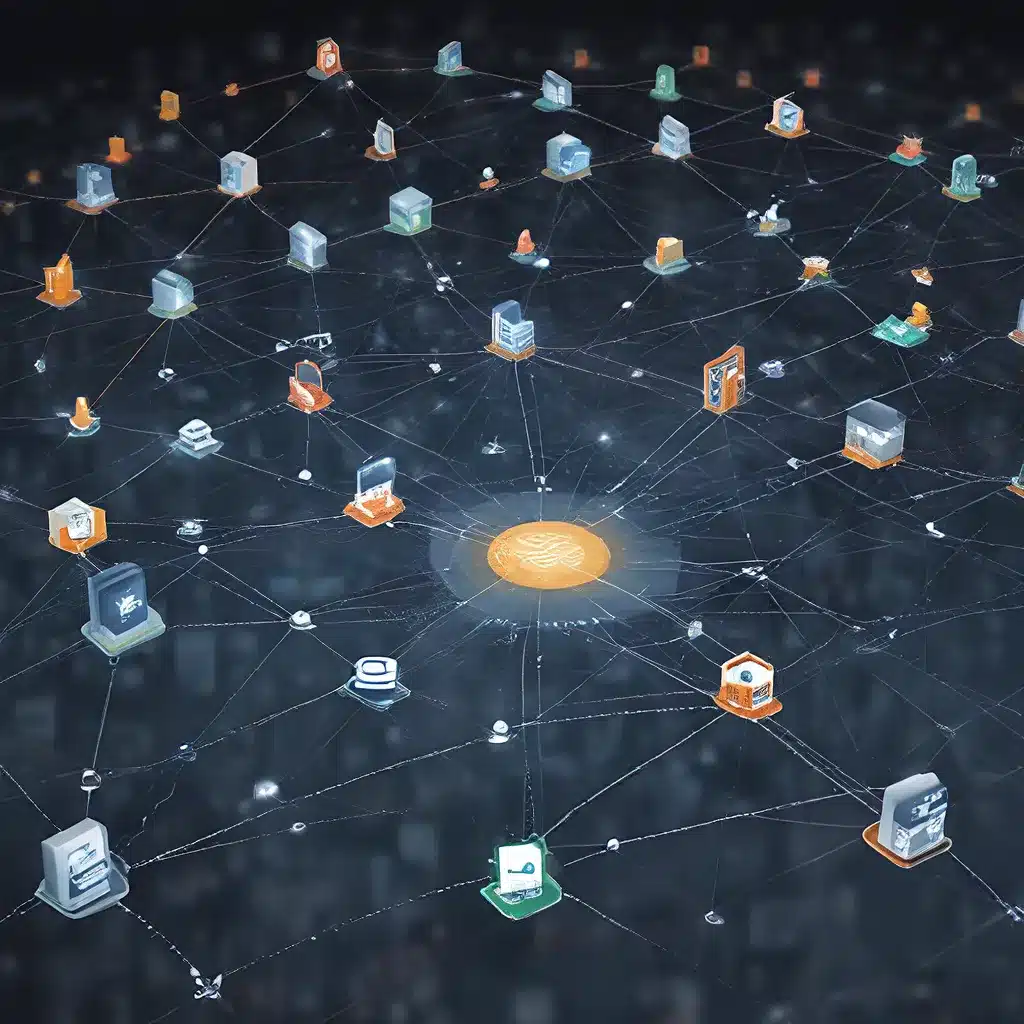
Navigating the Evolving Landscape of Sensor Networks and IoT
In the rapidly advancing world of technology, the Internet of Things (IoT) has emerged as a game-changer, transforming the way we interact with our environment. At the heart of this revolution are sensor networks – intricate webs of interconnected devices that gather, process, and exchange data, enabling unprecedented insights and capabilities.
As the IoT ecosystem continues to evolve, the design and management of sensor networks have become increasingly complex. Distributed algorithms have emerged as a critical component in this landscape, offering adaptive solutions that can navigate the dynamic and often unpredictable nature of IoT environments.
Understanding Distributed Algorithms for Sensor Networks
Distributed algorithms, in the context of sensor networks, refer to the mathematical and computational frameworks that enable coordinated decision-making and task execution across a network of interconnected devices. These algorithms are designed to operate in a decentralized manner, where each node in the network can independently make decisions and respond to changes in the environment.
One of the key advantages of distributed algorithms is their ability to adapt to dynamic conditions. In IoT environments, where the number and location of sensor nodes can fluctuate, and the network topology may frequently change, traditional centralized approaches often fall short. Distributed algorithms, on the other hand, can seamlessly accommodate these variations, ensuring that the sensor network remains responsive and efficient.
Researchers have made significant advancements in the development of distributed algorithms for sensor networks, focusing on energy management, task allocation, and network optimization. These algorithms leverage the collective intelligence of the sensor nodes, enabling them to make autonomous decisions and coordinate their activities, ultimately enhancing the overall performance and resilience of the IoT system.
Adaptive Sensor Networks for Dynamic IoT Environments
One of the key challenges in IoT is the dynamic and unpredictable nature of the environments in which sensor networks operate. Factors such as changes in node locations, network congestion, and variable resource availability can significantly impact the performance and efficiency of the system.
Distributed algorithms play a crucial role in addressing these challenges by enabling sensor networks to adapt and respond to changes in real-time. Through sophisticated coordination mechanisms, these algorithms allow sensor nodes to reorganize their communication patterns, redistribute workloads, and optimize resource utilization as the environment evolves.
Adaptive sensor networks, powered by distributed algorithms, can dynamically adjust their sensing, processing, and communication capabilities to meet the changing demands of the IoT ecosystem. This adaptability is particularly important in scenarios where unforeseen events or rapidly shifting conditions require immediate and coordinated responses from the sensor network.
Exploring IoT Applications and Security Considerations
The versatility of sensor networks and their ability to adapt to dynamic IoT environments have enabled a wide range of innovative applications. From smart cities and industrial automation to environmental monitoring and healthcare, sensor networks are revolutionizing the way we interact with and understand our world.
However, as the adoption of IoT technologies continues to grow, security and privacy concerns have become increasingly critical. Distributed algorithms play a pivotal role in addressing these challenges by implementing robust security protocols, decentralized authentication mechanisms, and secure data management strategies.
Researchers have developed innovative approaches that leverage the inherent resilience and flexibility of distributed algorithms to enhance the overall security posture of sensor networks. These methods include secure routing protocols, intrusion detection systems, and decentralized key management schemes, all designed to protect the IoT ecosystem from various cyber threats.
Energy Management and Sustainable Sensor Networks
One of the critical challenges in sensor network design is energy management. As sensor nodes are often deployed in remote or inaccessible areas, their power consumption and energy efficiency are crucial factors that determine the longevity and reliability of the overall system.
Distributed algorithms have emerged as a powerful tool for optimizing energy usage in sensor networks. These algorithms enable sensor nodes to dynamically adjust their power consumption, balance workloads, and implement energy-efficient communication protocols, ensuring that the network can operate for extended periods without frequent battery replacements or recharging.
Moreover, the integration of renewable energy sources, such as solar panels or wind turbines, with distributed algorithms has opened up new possibilities for sustainable and self-powered sensor networks. These energy-aware distributed algorithms can adapt to fluctuations in renewable energy availability, ensuring that the sensor network continues to function reliably, even in the face of intermittent power supply.
The Future of Sensor Networks and IoT
As the world continues to embrace the transformative potential of IoT, the role of sensor networks and distributed algorithms will only become more crucial. The ongoing advancements in areas such as edge computing, 5G communication, and machine learning are further enhancing the capabilities of sensor networks, enabling them to process data locally, communicate more efficiently, and make more informed decisions.
The adaptive and resilient nature of sensor networks powered by distributed algorithms will be essential in navigating the increasingly complex and dynamic IoT environments. These technologies will continue to drive innovations across a wide range of industries, from smart cities and precision agriculture to healthcare and environmental monitoring.
As you explore the ever-evolving landscape of sensor networks and IoT, we invite you to visit sensor-networks.org – a dedicated resource for industry insights, technical articles, and expert analysis on the latest advancements in this rapidly transforming field.